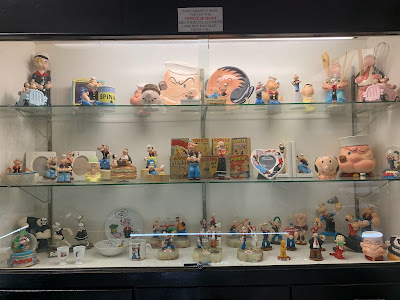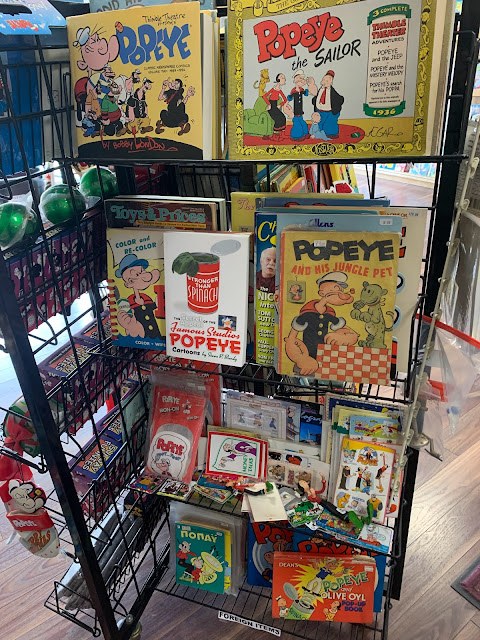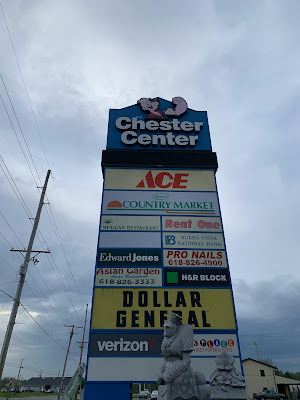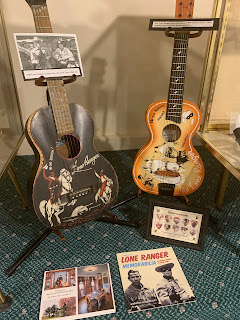Saturday, December 31, 2022
In with the New Year, Out with the Old
Friday, December 30, 2022
Chester, the Town That Embraces Popeye, The Sailor
Friday, December 23, 2022
The History of The Lone Ranger Restaurant
Thursday, December 15, 2022
It's a Christmas Tradition

If you are like me, every holiday you tune to a local radio station that traditionally plays the same Christmas songs over and over and over... and yeah, it gets tedious hearing the same recordings every year. Christmas is a time to establish a fond look back through nostalgic vocals and my frustration grows knowing that Gene Autry's rendition of Rudolph, the Red-Nosed Reindeer and Bing Crosby's White Christmas is going to play on rotation... again and again.
http://8tracks.com/anon-10210356446524254/vintage-christmas-music-station
Sunday, December 4, 2022
KING KONG: The "Lost" 1933 Radio Serial
The year was 1933. The country was in the height of a Depression and weeks after the Bank Holiday concluded, RKO Radio Pictures promoted a new motion picture as "the picture destined to startle the world." An ambitious statement when many in the country were facing financial hardship.
In the weeks leading up to the theatrical release of KING KONG, executives at RKO purchased an unusual time slot for an eight-week radio serial, adapted from the screenplay. The studio made a daring move by not only giving away the entire plot of the movie before the picture was released nationwide, but by eliminating the advertising agency which most sponsors employ, an executive at NBC hired stage actors in New York City to report to the radio studios at Rockefeller Center, twice a week, to dramatize the epic that took place on an unchartered island and a monster rampage through the streets of New York City.
The radio serial has a fascinating history. To start, Max Steiner's music score was not featured and music was almost non-evident. The cast replicated the island natives as they chanted "Ani Saba Kong" repeatedly as the series opener, with solo drums. The majority of the serial took place on Skull Island and featuring a harrowing epic of survival, including scenes that never made it to the final cut of the theatrical release -- including the notorious and often talked about spider pit sequence. Nationwide coverage of an earthquake in Los Angeles pre-empted the broadcast of one chapter, causing the script writer to combine the final two episodes into one, effecting the dramatic portion of Kong's rampage through the asphalt jungle known as New York City. The script writers chose to eliminate the unrequited love and the repression of violent sexual desire that was evident in the movie, the stand-off against the voodoo natives, and there was no opening scene that depicted economic oppression.
To ensure top value, the book is being limited to a printing of 100, pre-sale only. This ensures the book will gain value over the years (and for those who plan to resell them years from now, an investment). At the time I am typing this blog entry, more than half of the books are sold. As I am raising money for the construction of a coffee shop throughout the winter (contracts are signed, the contractors break ground in the spring), limited edition projects such as these will be common. But while a few will be eyebrow raisers among fans of old-time radio, this one might be the most impressive.
If you want to order your copy today before they sell out, visit www.martingrams.biz.
And for deep-analysis and historical information about this 1933 radio serial, click here: http://martingrams.blogspot.com/2015/10/king-kong-lost-1933-radio-serial.html




















































